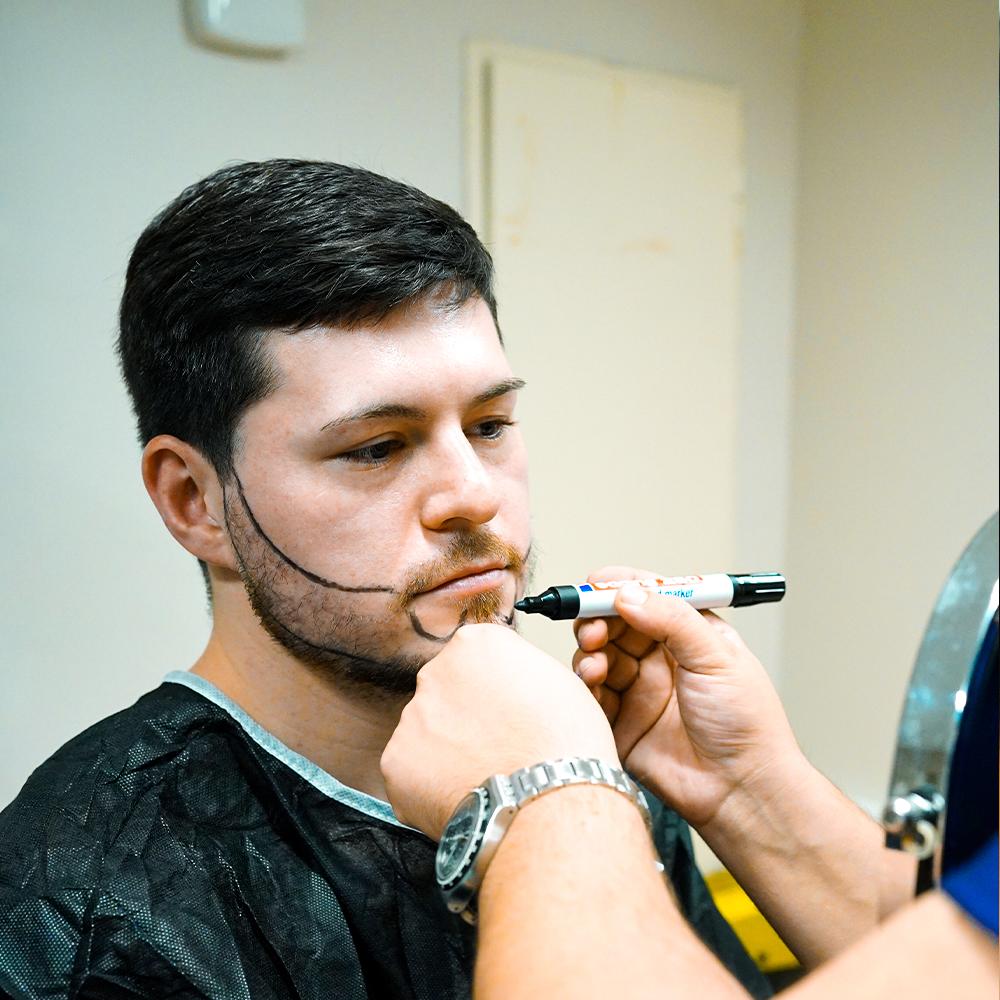Beards have long been a symbol of masculinity, confidence, and style. However, not every man is naturally blessed with thick and full facial hair. Due to genetic factors, hormonal imbalances, or medical conditions, some individuals experience patchy or thin beard growth. A beard hair transplant has emerged as an effective solution for those looking to enhance their facial hair. While the procedure is widely popular, a critical question arises: What is the best age for a beard hair transplant?
Understanding Beard Hair Transplant
A beard hair transplant is a cosmetic procedure in which hair follicles are extracted from a donor area—usually the back of the scalp—and implanted into the beard region. This technique ensures natural-looking, permanent results. Many men seeking this procedure want to achieve a fuller and well-shaped beard to enhance their facial aesthetics. Among individuals considering this treatment, Beard Hair Transplant in Dubai has gained immense popularity due to advanced techniques and experienced professionals in the field.
The Role of Age in Beard Hair Transplant
Age plays a crucial role in determining the success and suitability of a beard hair transplant. While there is no strict age limit, experts generally recommend undergoing the procedure after the facial hair growth pattern has fully developed. Several factors influence the ideal age for a beard transplant:
Facial Hair Development
Facial hair growth varies from person to person and is largely influenced by genetics and hormones. Most men experience significant beard growth between the ages of 18 and 25, with some continuing to see changes into their late 20s. Undergoing a transplant too early may be premature, as natural hair growth could still improve over time.
Hormonal Maturity
Testosterone and dihydrotestosterone (DHT) are responsible for beard growth. These hormones fluctuate during adolescence and stabilize in early adulthood. It is essential to allow these hormones to reach a stable level before opting for a beard hair transplant. In most cases, men over the age of 25 have reached sufficient hormonal maturity to make informed decisions about their facial hair.
Stability of Hair Loss
Some individuals experience progressive hair thinning or loss. If a person is genetically predisposed to male pattern baldness, it is advisable to assess the stability of hair loss before undergoing a transplant. A specialist can evaluate the donor area's long-term viability to ensure sustainable results.
Best Age Ranges for a Beard Hair Transplant
While the ideal age may vary based on individual circumstances, the following age ranges provide a general guideline:
18–21 Years: Too Early
At this stage, most men are still in the early phases of facial hair development. It is advisable to wait and observe how the beard grows naturally before considering a transplant. Additionally, undergoing the procedure too soon may not provide the best results as future growth patterns remain uncertain.
22–25 Years: Early Candidates
Some men may achieve full facial hair development by their early 20s. If the beard remains patchy despite waiting, a transplant could be an option. However, a professional assessment is essential to determine whether additional natural growth is still possible.
26–35 Years: Ideal Age Range
Most specialists recommend getting a beard transplant between the ages of 26 and 35. By this time, facial hair patterns have stabilized, and the individual can make an informed decision. The donor's hair is also at its optimal quality, ensuring successful implantation.
36–50 Years: Still a Viable Option
Men in their late 30s and 40s can also benefit from a beard transplant. At this stage, facial hair patterns have fully developed, and hormonal fluctuations are minimal. However, the availability of strong donor hair is a critical factor to consider.
50+ Years: Case-by-Case Basis
While beard transplants can still be performed after the age of 50, factors such as hair texture, density, and healing capacity should be carefully evaluated. Some men may have weaker donor areas due to aging, which can affect the overall results.
Factors to Consider Beyond Age
Age is only one of the many factors to consider before undergoing a beard transplant. Other key aspects include:
Genetic Factors
Genetics plays a significant role in beard density. Some individuals may have naturally sparse facial hair despite being at an ideal age. A transplant can effectively enhance beard fullness in such cases.
Skin and Hair Type
The texture, thickness, and growth pattern of donor hair should match the natural beard for a seamless look. Additionally, skin sensitivity and healing ability influence the success of the procedure.
Overall Health
Good general health is essential for a successful transplant. Individuals with conditions such as diabetes, autoimmune diseases, or poor wound healing should consult a specialist before proceeding.
Lifestyle and Maintenance
Proper post-transplant care is crucial to achieving the desired results. Patients should be prepared to follow post-procedure guidelines, including avoiding shaving for a certain period and using recommended hair care products.
Conclusion
The best age for a beard hair transplant largely depends on an individual's facial hair development, hormonal stability, and overall health. While the ideal age range is typically between 26 and 35 years, younger and older candidates can also achieve successful results under the right circumstances. Consulting with an experienced professional is essential to determine the best time for the procedure, ensuring natural and long-lasting beard growth. Whether in the early 20s or late 40s, careful evaluation and planning can help achieve the desired beard aesthetics effectively.






Comments